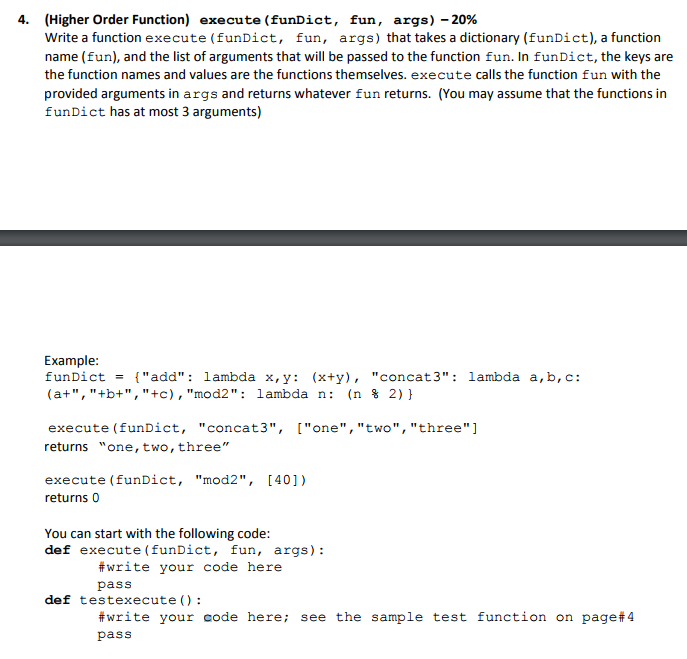Question
NOTE: In Python 4. (Higher Order Function) execute(funDict, fun, args) 20% Write a function execute(funDict, fun, args) that takes a dictionary (funDict), a function name
NOTE: In Python
4. (Higher Order Function) execute(funDict, fun, args) 20% Write a function execute(funDict, fun, args) that takes a dictionary (funDict), a function name (fun), and the list of arguments that will be passed to the function fun. In funDict, the keys are the function names and values are the functions themselves. execute calls the function fun with the provided arguments in args and returns whatever fun returns. (You may assume that the functions in funDict has at most 3 arguments) Example: funDict = {"add": lambda x,y: (x+y), "concat3": lambda a,b,c: (a+","+b+","+c),"mod2": lambda n: (n % 2)} execute(funDict, "concat3", ["one","two","three"] returns one,two,three execute(funDict, "mod2", [40]) returns 0 You can start with the following code: def execute(funDict, fun, args): #write your code here pass def testexecute(): #write your code here; see the sample test function on page#4 pass

Step by Step Solution
There are 3 Steps involved in it
Step: 1

Get Instant Access to Expert-Tailored Solutions
See step-by-step solutions with expert insights and AI powered tools for academic success
Step: 2

Step: 3

Ace Your Homework with AI
Get the answers you need in no time with our AI-driven, step-by-step assistance
Get Started


